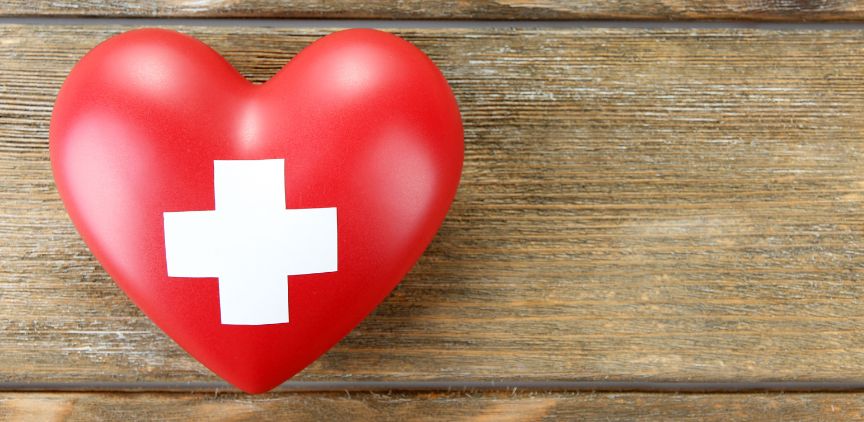Heart Health 101
Today, we're going to have a heart-to-heart about, well, your heart. It's that vital organ keeping you going, and we want to ensure it stays that way. Let's dive into the not-so-chit-chatty side of things – the early warning signs of a heart attack.
Before we get into the nitty-gritty, did you know that every 40 seconds, someone in the United States has a heart attack? Yeah, it's that common. Now, let's talk about what your heart might be trying to tell you.
What are the Early Warning Signs of a Heart Attack?
Chest Discomfort
This could be a feeling of heaviness, pressure or squeezing in your chest. It might not be painful, but it's there, and it's persistent. Statistics show that about 90% of heart attack patients experience chest discomfort. Don't ignore it; your heart is trying to send an urgent memo!
Shortness of Breath
Ever find yourself gasping for air, even when you're not running a marathon? That's a sign too. In fact, in one study, about 50% of people who had chest discomfort experienced shortness of breath. If your lungs are working overtime for no apparent reason, it's time to listen.
Fatigue
We all get tired, but sudden and extreme fatigue that you can't shake off? Not normal. About 71% of women reported experiencing unusual fatigue more than a month before their heart attack. If your energy levels are plummeting out of the blue, it's a red flag.
Nausea and Vomiting
Feeling queasy? Pay attention. It might not be that dodgy lunch; your heart could be sending a signal.
Sweating
We all break a sweat, especially after a workout. But cold sweats with no apparent reason? Sweating profusely when you don’t have a fever and are not exerting yourself or in a hot environment – especially if accompanied by other symptoms mentioned above may be a symptom of heart attack. If your body is in panic mode without a clear cause, don't brush it off.
How do you get Screened for Heart Attack?
Screening for a heart attack typically involves a combination of medical history assessments, physical examinations and diagnostic tests. Routine screening for heart attacks is often done for individuals who are at a higher risk due to factors such as age, family history or pre-existing health conditions. Here's a breakdown of how you might get screened:
Medical History
When you see your healthcare provider, they'll start by chatting with you about your health journey. They'll ask about things like your family's heart history, any ongoing health issues (like diabetes or high blood pressure), and your lifestyle choices, such as whether you smoke or how much you exercise. It's like getting to know your health story!
Physical Examination
Your doctor will give you a once-over to make sure everything's in tip-top shape. They'll check your blood pressure, heart rate and take a peek at your overall heart health. They might even give your ticker a listen for any funky sounds or irregular beats—just to be thorough!
Blood Tests
They might run some blood tests to get the lowdown on your heart health. These tests check things like cholesterol, triglycerides and special enzymes that pop up if your heart muscles have taken a hit (like troponin). It's like giving your heart a little checkup from the inside!
Electrocardiogram (ECG or EKG)
The ECG is a painless test that keeps tabs on your heart's electrical activity. It's like a heart whisperer, catching any funky rhythms, spotting past heart hiccups and giving you the insights on your heart's overall well-being. No needles involved, just a little insight into your ticker's dance moves!
Stress Tests
In this test, you will be asked to hop on a treadmill or stationary bike, and your heart takes center stage. A stress test is like a performance for your heart, checking out how it handles the physical hustle. It's a cool way to spot any quirks or irregularities that might not show up when you're chilling out. Just your heart and a workout – a dynamic duo!
Imaging Tests
Various imaging tests may be used to get a clearer picture of your heart's structure and function. These can include:
- Echocardiogram - Uses sound waves to create a moving image of your heart.
- CT angiography - Provides detailed images of blood vessels in and around the heart.
- MRI (Magnetic Resonance Imaging) - Produces detailed images of the heart's structure and blood flow.
Coronary Angiography
In some cases, a coronary angiogram may be recommended. This involves injecting a contrast dye into the coronary arteries, followed by X-ray imaging. It helps identify blockages or narrowed arteries.
Calcium Scoring
Imagine it as a detective mission for your heart. They use a CT scan to suss out and measure calcium deposits in your coronary arteries. If the calcium levels are higher than normal, it could be a sign that the sneaky culprit called coronary artery disease might be hanging around. It's like a high-tech investigation into your heart's health!
Remember the Warning Signs
Heart attacks can sneak up on you, whether it's a slow build-up or a sudden jolt. Now, chest pain and shortness of breath might sound scary, but here's the scoop – quick detection and treatment can be a game-changer. It might just give you more time and help lessen the impact on your overall health.
Simple lifestyle changes like ditching cigarettes, chowing down on a healthy diet and getting your body moving regularly can be your heart's best buddies. So, what's the bottom line? Be aware, take action and make those heart-healthy choices. Your ticker will thank you!
Read on to learn more about advanced prostate cancer.
Article Resources
- Warning Signs of a Heart Attack a Month Before | Medical News Today
- Symptoms You Might Experience a Month Before a Heart Attack | Healthline
- Shortness of breath as a diagnostic factor for acute coronary syndrome in male and female callers to out-of-hours primary care | BMJ Journals
- Heart Attack Diagnosis | Mayo Clinic

